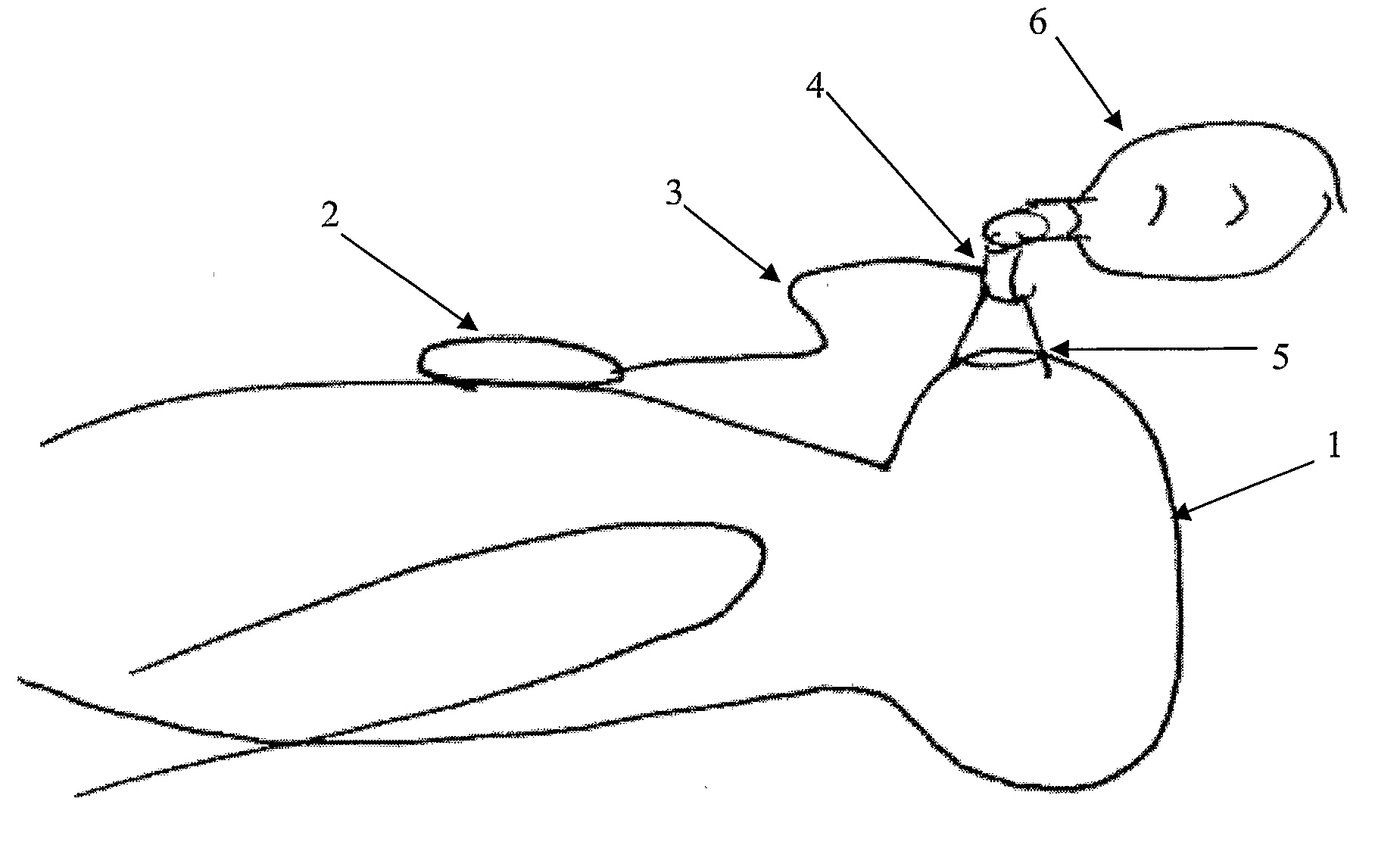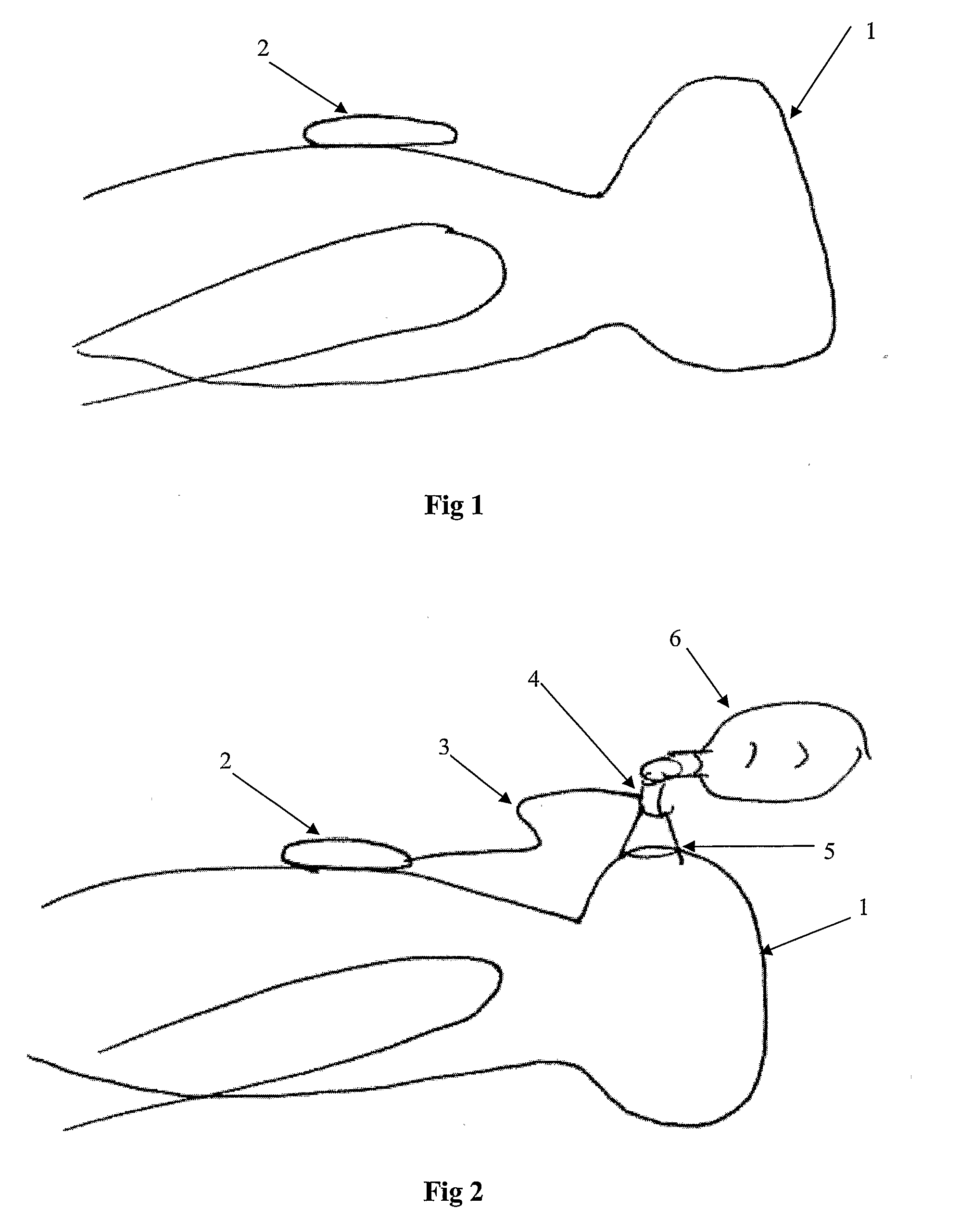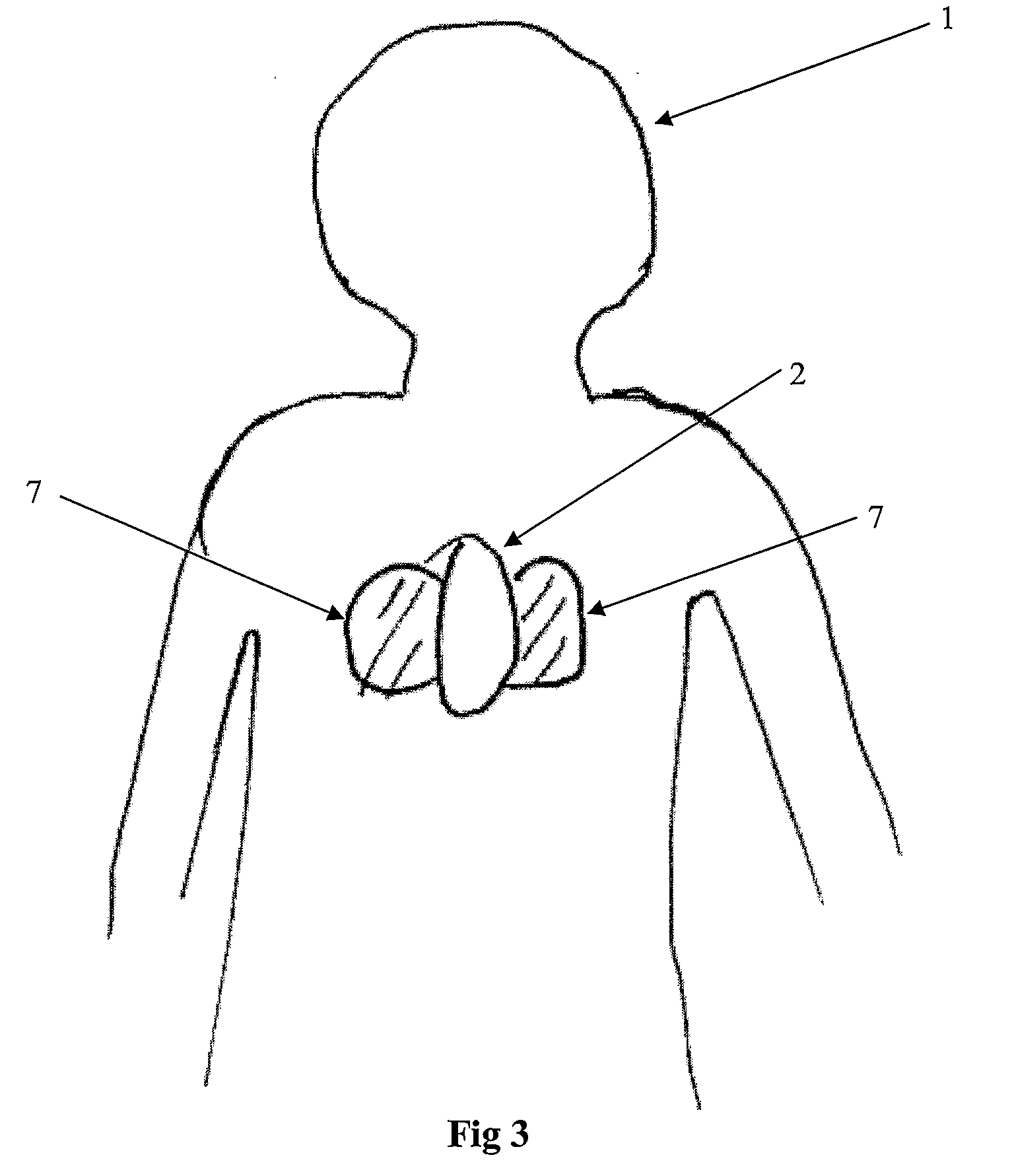Standalone system for assisting in a life-saving situation
a life-saving situation and stand-alone technology, applied in the field of stand-alone systems for life-saving situations, can solve the problems of not considering ventilation, ventilation inactivity or compression inactivity, and no prior art systems or devices that provide feedback, so as to achieve better treatment and increase the chance of survival
- Summary
- Abstract
- Description
- Claims
- Application Information
AI Technical Summary
Benefits of technology
Problems solved by technology
Method used
Image
Examples
Embodiment Construction
[0059]FIG. 1 shows a patient 1 with a compression unit 2 attached to his / her chest. The unit 2 may be attached using adhesive tape. When a rescuer performs compressions on the patient's chest, the rescuer places his hand on top of the unit 2. The unit 2 will therefore travel the same distance as the chest is compressed. A movement sensor, including or connected to a calculation means, located inside the compression unit will detect the distance / depth. The movement sensor may be an accelerometer, but other solutions may be employed such as use of a gyro or distance measurements from a reference point or by triangulation. In case of an accelerometer, in order to find the depth, the signal from the sensor will have to be filtered and double-integrated, as is well know in the art. An additional force sensitive unit, in its most simple form just a force activated switch, will also be part of the unit. This force sensitive unit will be activated each time the rescuer performs a compressio...
PUM
 Login to View More
Login to View More Abstract
Description
Claims
Application Information
 Login to View More
Login to View More - R&D
- Intellectual Property
- Life Sciences
- Materials
- Tech Scout
- Unparalleled Data Quality
- Higher Quality Content
- 60% Fewer Hallucinations
Browse by: Latest US Patents, China's latest patents, Technical Efficacy Thesaurus, Application Domain, Technology Topic, Popular Technical Reports.
© 2025 PatSnap. All rights reserved.Legal|Privacy policy|Modern Slavery Act Transparency Statement|Sitemap|About US| Contact US: help@patsnap.com



